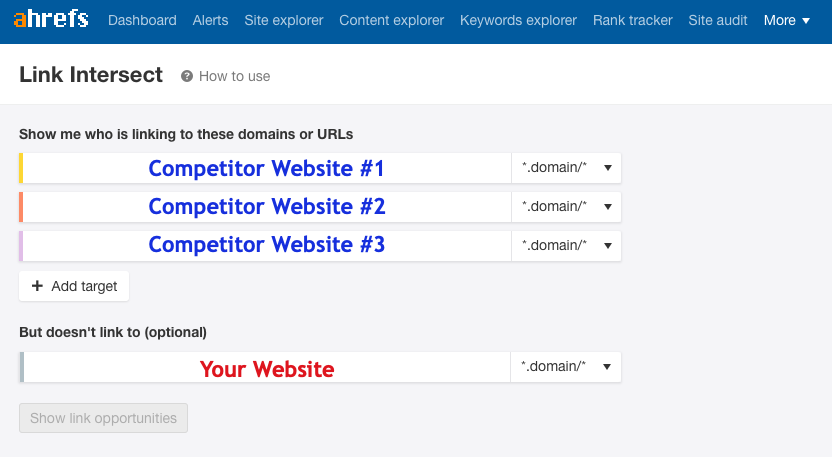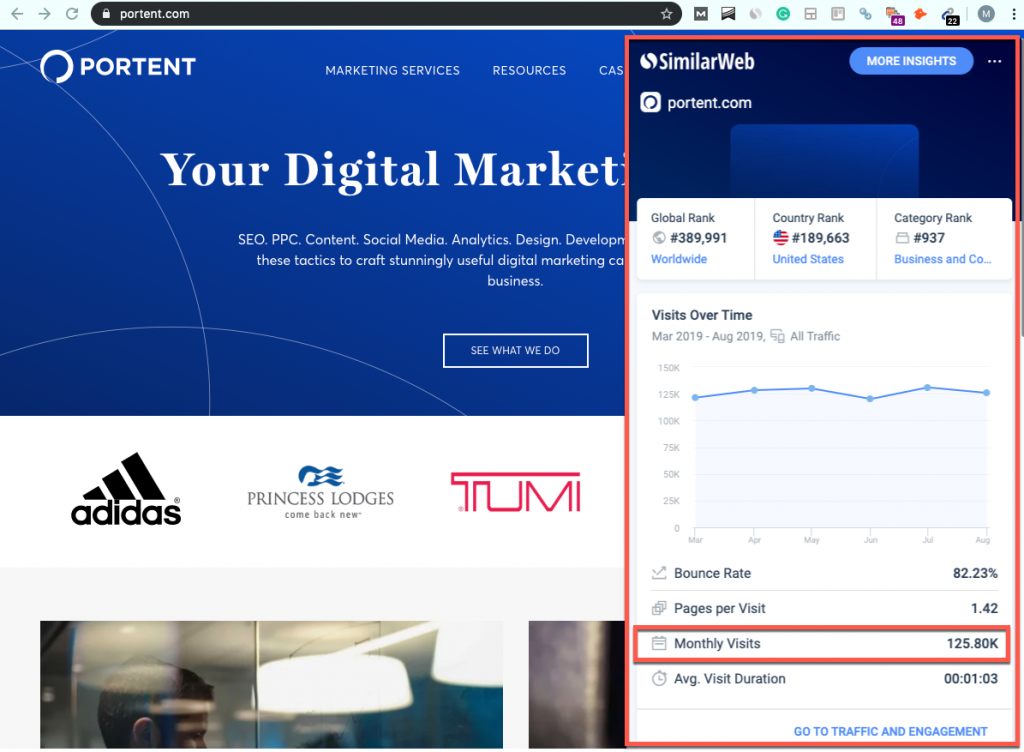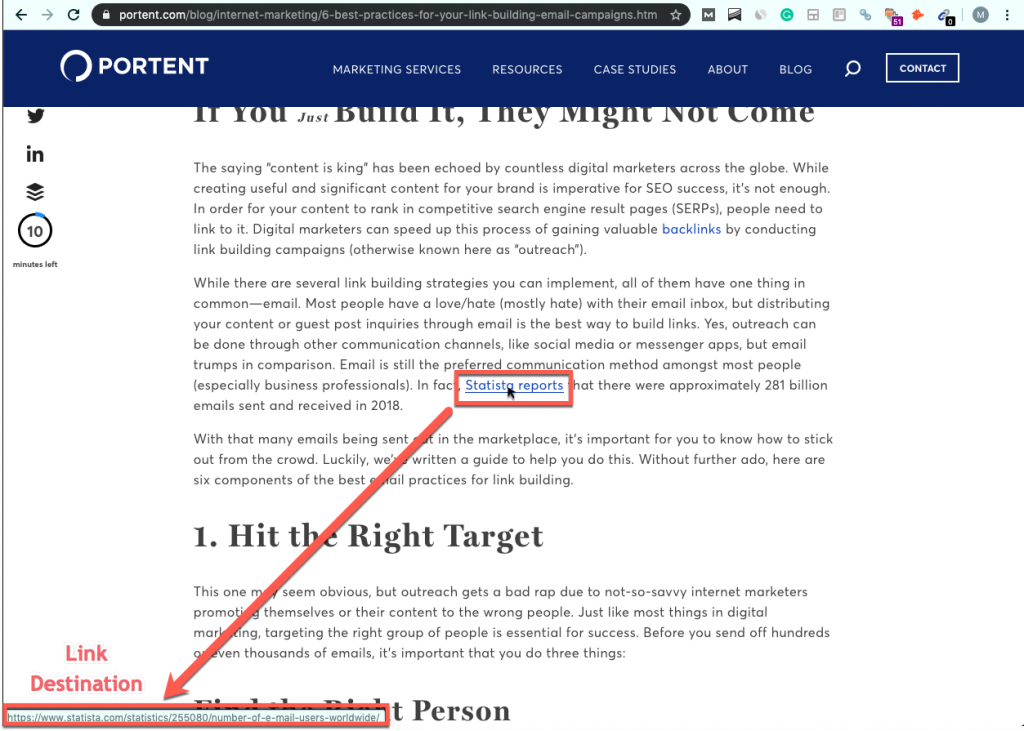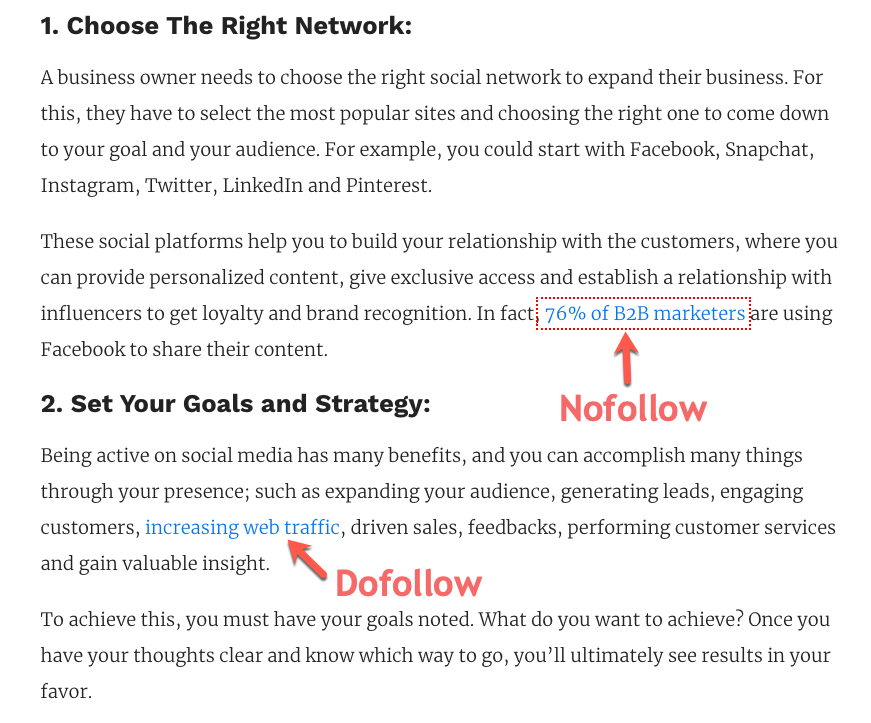As links remain one of the top Google ranking factors, a well-rounded digital marketing strategy must include some form of link building. Guest posting is one of the best ways to get relevant, high-quality backlinks to your site, but it can be intimidating when you’re first starting out.
Before you actually start writing guest posts and building links back to your site, you need to find online publications for which to write. But how do you find sites that allow guest posting? And how can you tell which ones are high-quality and will be valuable to your site’s ranking in the SERPs? Here’s what you need to know so you can start prospecting for guest post link building targets and landing links to your site.
Tools to Use for Guest Post Prospecting
When prospecting for guest posting sites, there are various off-page SEO tools that are helpful, which we’ll cover in this post:
Most of these tools are free or have a free version. Keep in mind that you don’t need to have the latest and greatest software and tools to be successful with guest post link building. At the most basic level, using Google search queries can get you a long way.
Searching for Websites
Google Search Queries
Even with all of the useful and complex tools available, a Google search is still one of the best ways to find sites for guest posting. You just need to know the right approach to search for sites.
Start with simple search terms to find sites relevant to yours, then move on to more complex searches. Familiarize yourself with search operators as they can help you narrow down sites. Operators that are particularly useful for finding guest posting sites are:
- Quotation marks (“ “): this will bring up exact matches of the terms within the quotation marks
- InURL search query (InURL:): this will bring up pages with your search term in the URL
- Minus sign (-): this will exclude terms you don’t want in the search results
Using any combination of these operators will bring up different results, so try changing them if you aren’t getting the results you need. Here are a few search terms and operators you can try out:
- “[keyword, industry, or vertical]” “guest post”
Example: “business” “guest post” - “[keyword, industry, or vertical]” “write for us”
Example: “travel” “write for us” - “this is a guest post by” inurl:[keyword, industry, or vertical]
Example: “this is a guest post by” inurl:tech - “contribute guest article” “[keyword, industry, or vertical]”
Example: contribute guest article “health and wellness” - “[keyword or vertical]” guest post -[website or term you don’t want included]
Example: “fashion” guest post -sponsored
When you get stuck and feel like you aren’t finding any good guest posting sites through your original search query, click on a few of the related searches at the bottom of the page and see what comes up. Even the smallest change in a Google search query can bring up very different results, so don’t be afraid to tweak your queries.
Ahrefs
Among all of the great tools by Ahrefs is the Link Intersect Tool, which is especially useful when you want to see what sites are linking to your competitors. All you need to do is add your competitor’s website URLs into the boxes where it says “Show me who is linking to these domains or URLs,” then put your own website URL into the box that says “But doesn’t link to” and click “Show link opportunities.”

It will pull up a list of all the backlinks your competitors have that you don’t. You can then sift through the results and see which ones are relevant to your site, and then research to see if they are currently accepting guest posts.
Similar Sites
Once you’ve found at least one site that’s good for guest posting, head over to Similar Sites and plug in that URL. It will find other websites that are similar to the one you plugged in. This saves lots of time when searching for sites in a particular industry or vertical.
How to Evaluate a Site for Guest Posting Potential
Once you’ve found a site on which you’d like to guest post, you need to evaluate it to make sure it’s not only relevant but credible and can pass authority onto your site. You don’t want to guest post on a site that has lots of spammy links and low-quality content. It won’t do any good for your site, and can actually hurt it. Google and other search engines may assume that you’re participating in a link scheme and penalize your site.
Here are some things to look for when evaluating a site for guest posting potential.
Is This Site Relevant to My Business?
Figure out what the goal of the website is and what kind of people might visit it. If they’re the kind of people that you want to come to your target page, that’s a good sign. Relevance is the number one most important thing to look for when guest posting.
Does This Site Look Credible?
If the site looks like it was hand-coded in 1997, that’s a hard pass. Make sure it looks up-to-date and thoughtfully put together. Take a look at the “about” page to see who owns and maintains the site and what their mission is. The bottom line: if it’s a site that doesn’t scare you the first time you visit, it’s worth considering.
Check the Domain Authority or Domain Rank
Install the MozBar or Ahrefs SEO Toolbar on your browser. Either of these will provide certain metrics for each site you visit. The main thing we’ll look at for guest posting is Moz Domain Authority (DA) or Ahrefs Domain Rank (DR).

Both DA and DR are a number out of 100 and, in general, higher is better. DA measures a site’s likelihood of ranking on the SERPs, and DR is an evaluation of a site’s backlink profile.
A good rule of thumb when looking at a site’s DA or DR for guest posting is to keep it above 25. If it’s below that, it’s not always a bad thing, especially if the site is relevant to your business. Relevance will always outweigh DA or DR, so don’t be afraid of guest posting on sites with low DA or DR if they’re pertinent to your site and look authoritative and high quality.
Site Traffic
Install the Similar Web browser plugin to gain insights on sight traffic.

Look at how many monthly visits the site gets. More site visits mean more potential visibility for your article and a higher chance of gaining referral traffic via your guest post. If a site has a low number of monthly visits, it’s up to you to decide if it’s worth spending the time and resources to write a guest post for it or not. And once again, relevance is the most important thing, so if a site is relevant to your business, it’s okay if there aren’t as many monthly site visits.
Does This Site Have a Blog?
If you’re going to write a guest post for another site, you’ll need to make sure there’s a blog where your guest post can be published. Evaluate the blog to see if it’s a good fit for your content.
Start by quickly checking out two to three blog posts and ask yourself the following questions:
- How often are new posts published? A good blog is published consistently, whether it’s once a day, a couple of times a week, or a few times a month. If a site’s most recent blog post is six months old, there’s a good chance you won’t get a guest post on it for quite a while, if at all.
- Are there links within the body of each blog post? If you’re going to build links via guest posting, you’ll want to make sure links are allowed in your article. You don’t want to waste all your effort writing a post and not getting a link back to your site.
- How many links are there? If there’s only one link in each blog post, it might be difficult to make sure it’s one leading back to your site. If there are four to ten links in an article, you have a higher chance of getting your link in there. If there are more than ten links per article, it may look spammy to search engines, so it’s probably best to avoid it.
- Are the links external, internal, or a combination of both? Hover over a link and it will show the destination URL in the bottom left-hand corner of the screen. Do this for a few links in each article to see if all of the links are external (leading to other websites) or internal (leading only to other pages within the same site). If it only has internal links, steer clear of guest posting for that site as they’ll likely replace your link with one back to their own site (or remove your link altogether). There need to be at least a few external links in each article on the site for it to be a viable option for guest posting.

- Where do the external links lead? If all of the external links go to irrelevant, spammy, or product pages, that’s a red flag. Make sure all of the external links are relevant to the articles in which they’re being used.
- Are the links dofollow or nofollow? Nofollow links probably won’t pass on much SEO value to your site until nofollow becomes a “hint” in 2020, so you’ll want to try and get only dofollow links. Install the NoFollow Chrome Plugin to check for nofollow links. It puts a dotted red box around nofollow links so you can quickly see if a site uses them frequently. If you’ve already installed Moz’s toolbar, it can do the same thing.

- Do the articles use correct grammar, spelling, and sentence structure? Bad grammar and incorrect spelling and sentence structure may be a sign that a site doesn’t have quality content. You don’t want your site to be related to low-quality content, so stick to sites that have well-written, high-quality posts.
- Do the blog posts have disclaimers? Some sites publish only sponsored or affiliate guest posts, and they’ll put up a disclaimer that says something like “This is a sponsored post by ____” or “This article may contain affiliate links.” This means if you want to post on their site you’ll have to pay, and if you’re looking for a free guest post, you probably won’t get it.
- Who writes the blog posts? If the only people you see authoring posts on the site are staff or internal authors, they probably won’t accept a guest post from you. But if there are articles written by “guest authors,” “guest bloggers,” “guest contributors,” or anything else similar, the site likely welcomes guest posting, and you’ve got a good chance of publishing a post.
Send That Pitch
Now that you’ve determined that a site is right for guest posting, find the email address of its editor and send the best pitch you can. Make sure your pitch is friendly and catered to the site, keeping in mind it’s audience and what page you are trying to land a link to. Keep things relevant, helpful, authoritative, and high-quality, and you can’t go wrong. It’s a win-win for both you and the site you are writing for.












Hi Stella,
That is a very good article!
Thank you very much for your effort 🙂
Kind Regards
Martina